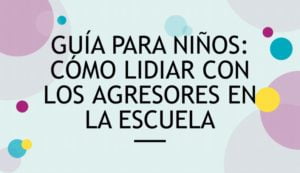Summer is here! School is almost over for the year. The weather is warming up and soon kids will be ready for summer activities!
Although summer is a great time for getting outdoors and enjoying the sun, water, and nature, there are potential dangers in all of these things. Check out our tips and resource links for keeping kids, and parents, safe this summer.
- Practice safety in the sun. Overexposure to the sun can cause both sunburns and heat stroke.
- The Centers for Disease Control (CDC) suggests that adults make sure that children are wearing loose, light colored clothing that covers up as much of their skin as possible. This will help protect against both the sun and heat.
- The CDC also advises using sunscreen that is AT LEAST 15 SPF and has UVA and UVB protection.
- The American Academy of Pediatrics (AAP) says that sunscreen should be re-applied once every two hours.
- The AAP also notes that children should wear hats with a 3-inch brim or bill facing forward and sunglasses.
- When children are going outside in the heat to do any physical activity, they should drink water before they go and should then take water breaks every twenty minutes while doing any physical activity, says the AAP.
- Practice safety in and around water. Drowning is the leading cause of death for children aged 1 to 4 years old.
- ALWAYS supervise children when around water, says Safe Kids Oregon. A designated adult should keep their eyes on children who are in or around water at all times. The AAP advises that adults should always be within an arm’s length of children age 5 and under when the children are around water. To help make sure you know who is supposed to be watching the children, you can use this Water Watcher Card.
- Safe Kids Oregon suggests that children and adults in or on the water for non-boating activities like swimming or who are in non-motorized boats wear personal flotation devices. And in Oregon, and most other states, state law prevents anyone from operating a boat with a child under the age of 12 onboard unless that child is wearing a U.S. Coast Guard approved personal flotation device/life vest.
- Practice safety while enjoying nature. Summer is a great time to get outdoors and explore the world, but it is always good to take precautions to keep the explorations safe.
- Protect children and adults from insects. Mosquitoes and ticks are all around us and can carry diseases. The CDC reminds us to use insect repellent while playing outdoors and to check your children and yourself for ticks. The National Wildlife Federation has a great article on natural ways to make your yard a tick free zone.
- Practice safety when hiking and in the wilderness. The Washington Trail Association suggests making sure you take a well-stocked first aid kit and giving every child a whistle to use in case they get lost. They also underline the importance of making sure that children and adults are dressed for the trail with adequate shoes and layers of clothing. Finally, as with all outdoor activities, making sure that children have water and food is essential. HikeSafe offers a list of hiking safety tips for children that might be helpful to read with your child before you go on your adventure.
- Practice safety while biking, skating, and scooting. The AAP states that children (and adults) should wear helmets on all bike rides, no matter how short or how close to home. Also, children who are on skateboards, scooters, in-line skates or wheelies need helmets. Check out their 2017 Summer Safety Tips for more information about safety while riding.
These are just a few ways that experts have suggested to keep your children, and yourselves, safe this summer. Check out the resource links below for more suggestions. Then let’s get out there and have (safe) fun!
http://www.cdc.gov/family/kids/summer/
http://www.safekidsoregon.org/safety-for-parents/drowning-prevention-and-water-safety/
https://www.nwf.org/News-and-Magazines/National-Wildlife/Gardening/Archives/2016/Ticks.aspx
http://hikesafe.com/index.php?page=what-you-should-know
http://www.wta.org/hiking-info/children/how-to/keeping-kids-safe-on-trail-and-in-camp
[divider type=”standard” text=”Go to top” full_width=”no” width=”1/1″ el_position=”first last”]
Image: © Friday123| Dreamstime.com
[divider type=”standard” text=”Go to top” full_width=”no” width=”1/1″ el_position=”first last”]





